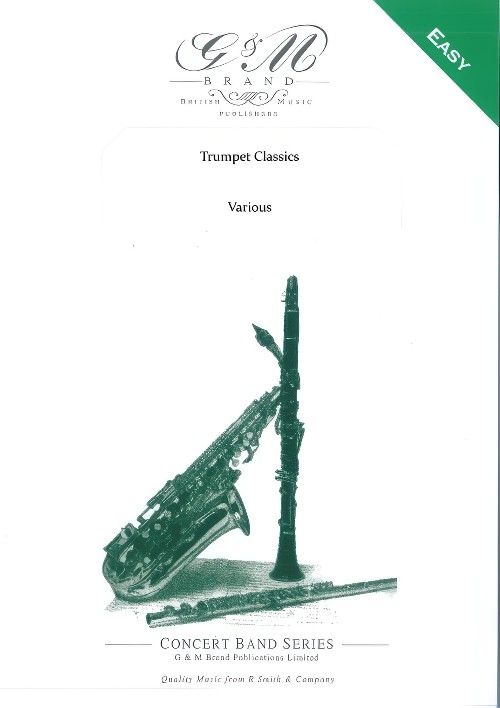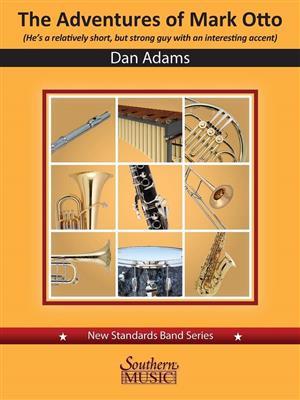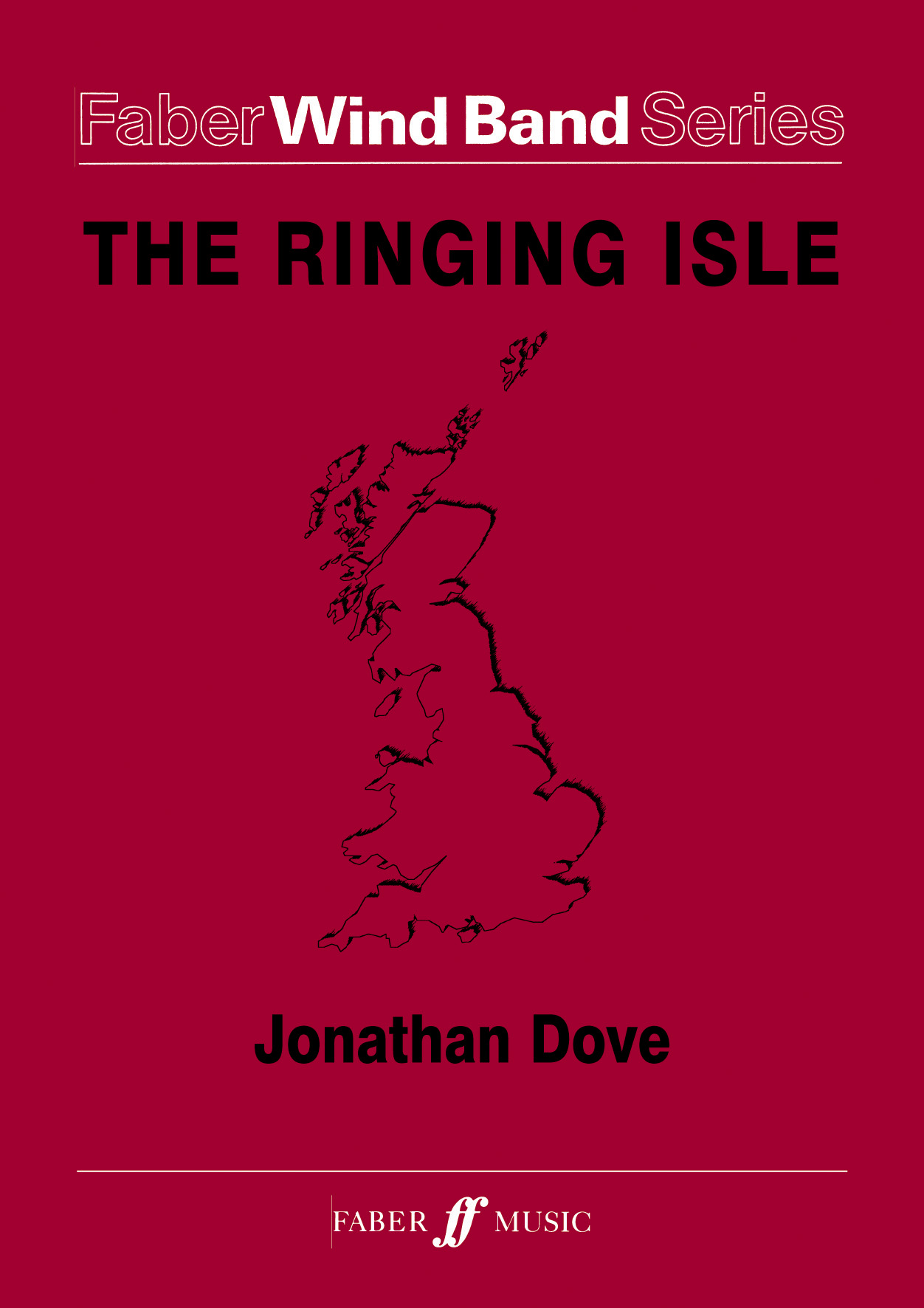Results
-
 £9.95
£9.95Trumpet Classics (Trumpet Solo) (Concert Band - Score Only) - Johnson, Stuart
Trumpet Tune - John Stanley (1713-1786) was an English organist and composer despite being blinded by an accident when he was only two years old, He learned music when he was seven and held several prestigious appointments as organist in London churches. He wrote Masques, Concertos for Strings, and three sets of Organ Voluntaries. Andante from Trumpet Concerto - This is the second movement of the well known Trumpet Concerto written in 1796 when Haydn was 64: a mature work therefore. Johnson, Stuart has cleverly transposed the piece into F Major (G Major for the Trumpet) and also replaced the original 6/8 with 6/4, making notation more accessible for younger players.
Estimated dispatch 7-14 working days
-
 £84.99
£84.99Charming Salzburg Wind Band Set (Score & Parts)
Salzburg, birthplace of Wolfgang Amadeus Mozart, inspired Dutch composer Henk Hogestein to write this musical tribute. Mozart was born in this charming Austrian town in January 1756. He was a musical prodigy - at the age of four he began receiving lessons from his father Leopold and at the age of six he was composing smart minuets and other short pieces. The composition Charming Salzburg is based on a theme from Mozart's opera Die Zauberfl?te, which he completed in 1791. The greatest composer of his day - the greatest of all time according to some - the brilliant Mozart wrote some of the world's best operas with Die Zauberfl?te was his last. 0:03:00
Estimated dispatch 7-14 working days
-
 £139.99
£139.99Light Cavalry Wind Band Set (Score & Parts)
Although he was born in Split, Croatia, of Belgian descent, Franz von Supp?'s nationality is defined less by his actual descendents than by the country and city where he lived and worked and had the great majority of his success, the Austrian capital, Vienna. It was here where, with assistance from the Johan Strausses and Franz Lehar, he helped to assure Vienna's reputation as the operetta capital of the world. He achieved this by pioneering operetta as a major medium for the theatre. The overture to Light Cavalry is one of his two most famous works, the other being the Poet and Peasant Overture written as incidental music for a play of the same name. 0:06:45
Estimated dispatch 7-14 working days
-
 £134.99
£134.99Marche au Supplice Wind Band Set (Score & Parts)
Hector Berlioz (1803-1869) once remarked: "My life is a novel that greatly interests me." Experiences in his personal life had a great influence on his compositions. Symphonie Fantastique, written in 1830, is also autobiographical: he subtitled the work Episode in the Life of an Artist. The symphony echoes his feelings for an actress. The Marche au Supplice (march into torture) he described as: "The artist dreams he has killed his beloved, that he has been sentenced to death and is being led to the scaffold. The procession moves to the notes of a march that is now sombre and turbulent, now radiant and stately, and in which boisterous outbursts suddenly dissolve into the heavy sound of marching feet." 0:04:50
Estimated dispatch 7-14 working days
-
£65.00
The Ringing Isle - Jonathan Dove
Handel called Britain 'the ringing isle' because when he moved to London, he heard bells ringing everywhere: great bells in church towers, and handbells in some of the first private houses he visited. The sound of people 'ringing the changes' is a peculiarly British sound of celebration, and it seems a good starting point for a piece celebrating British musical life. Within The Ringing Isle, Dove incorporates some traditional change-ringing patterns, from 'Grandsire Doubles', 'Oxford Treble Bob Minor' and his own version of 'Plain Bob Major'. Handel's phrase also conjures up an image of a magical island, and so this is how Dove envisaged how it must have been to approach Britain from an ocean voyage.
In stock: Estimated delivery 1-3 days
-
 £74.06
£74.06Temperamental (Concert Band) Fendall Hill
This work by Fendall Hill was the set test for the 2021 National Brass Band Championships of New Zealand, B Grade. Here it has been adapted for Concert Band. The composer writes: 'J.S. Bach (1685-1750) is deemed by many to be the 'Ulimate Composer'. He added an incredible proportion to the DNA of western music, and his influence is heard in the music of today. Like many artists, he was not overly recognised as a composer during his lifetime, and it took an 1829 performance of the St Matthew Passion by Mendelssohn to ignite a recognition of his place in the music world, a place he has maintained ever since. This piece starts with a similar spark of rediscovery of the music of Bach. It contains arrangements of various works, interspersed with composition based on Bach's chord structures, sections in the style of Bach, and original sections inspired by the moods created along the way. The first section explores the Toccata, and great organ works. This leads into an exploration of his choral works, and a finale based on the Preludes. The word 'Tempered' has different meanings, and all seem to apply to the music of Bach, and these appeal to the musical, engineering and spiritual aspects of my personal life. His music reaches to the humanity and divinity, it has strength, structure and order that creates frameworks in which incredible complexity reigns; and the complexity leads to a wildness, a kind of craziness that represents a range of human moods, and can change without warning. The same piece of music affects people in very different ways. I don't know if it's Bach's music, or us, but it can seem out of control and under control at the same time - the combination is highly temperamental. To view a follow-the-score video of the work please visit: https://youtu.be/6CtYZmCoWIc Sheet music available from: UK: www.wind-band-music.co.uk USA: www.solidbrassmusic.com Difficulty Level: Advanced Instrumentation: Instrumentation: Piccolo Flute 1-2 Oboe Bassoon Clarinet in Bb 1-3 Bass Clarinet in Bb Alto Saxophone 1-2 Tenor Saxophone Baritone Saxophone Trumpet in Bb 1-3 Horn in F 1-4 Trombone 1-2 Bass Trombone Euphonium Tuba Double Bass Timpani Percussion 1-3
In stock: Estimated dispatch 1-3 days
-
£127.00
The King of Siam (CB) - Pimpanit Karoonyavanich
Many foreigners who travel to Thailand for the first time always wonder why Thai people love their king so much, even more than their own life. However, that question is quickly answered after they realize how much our king sacrifies his life to develop Thai people's way of living especially the poor ones. He proves that the "love" from his people doesn't come from his birth as the royal family, but from his hard-working. As a Thai composer, Pimpanit wrote this piece out of her love and gratefulness she has to her beloved king of Thailand, His Majesty King Bhumibol Adulyadej, in the occasion of his 88 years old birthday. At this moment he already marks 70 years on the throne and he is also the world's longest-reigning living monarch, ascended to the throne. "Siam" was the name of Thailand before 1948.
Estimated dispatch 7-14 working days
-
 £122.00
£122.00Ouvertre in Es-Dur - Stephan Jaeggi
As part of the year 2023, dedicated to Swiss composers, the Swiss Wind Band Association has commissioned Gauthier Dupertuis to write a new orchestration of the Overture in E-flat major by Stephan Jaeggi. Indeed, an update of the instrumentation was necessary for the interpretation of this work with modern orchestras.Therefore, the orchestration that Gauthier Dupertuis proposes and which he wanted to be faithful to the original while meeting current standards, will allow today's orchestras to performthis piece of classical-romantic inspiration.Stephan Jaeggi was a Swiss composer and conductor who was born into a large family in Fulenbach (Canton of Solothurn) in 1903. He began playing the clarinet at the age of 13, then studied music at the Basel Conservatory and attended his military training with the Swiss Army Band. Thereafter, he became the conductor of several wind orchestras. In this role, and also that of a composer, Stephan Jaeggi went on to achieve great success. His early death in 1957 put a premature end to Stephan Jaeggi's creative life. All the more reason why his work lives on with unbroken power to this day.
Estimated dispatch 7-14 working days
-
 £138.00
£138.00The Saints And the Royal - Eric Swiggers
The Saints and the Royal was composed on behalf of Royal brass band St. Willibrord Heeswijk on the occasion of its 200th anniversary in 2023.When the marching band was founded in 1823, it was given the name "Harmonie Sint Cecilia," referring to Saint Cecilia, the patron saint of music. Around 1904, the name was changed to 'Kerkelijke fanfare Willibrord', strongly emphasizing the connection with the church in Heeswijk, of which Saint Willibrord is the patron saint. In 1973, at its 150th anniversary, the band received the predicate 'royal'. From that time on one speaks of the Royal brass band Saint Willibrord.The composition musically depicts both Saints Saint Cecilia and Saint Willibrord and the jubilee royal brass band. Although one of the oldest musical societies in the Netherlands, this fanfare is alive and kicking and will celebrate its 200th anniversary in 2023. The composition therefore opens festively and energetically. The alto saxophone plays a recitative, the Gregorian "Cantantibus organis Caecilia virgo in corde suo soli domino decantabat" from the vespers of the feast day of Saint Caecilia, the patron saint of music. This is taken over by the full wood and soft brass group. After a brief, playful interlude, this chant is played by the full orchestra, like an organ, larded with circumambulations.St. Willibord was born in England but made the crossing to the Netherlands in 690 to preach the gospel as a missionary. This was far from harmless and he faced frequent uprisings. After his death he was buried in Echternach in Luxembourg. In this place he is commemorated to this day with the annual "Spring Procession" or "Dance Procession". This procession of Echternach went as follows until 1947: 3 steps forward, 2 steps backward. Hence we hear this procession back in a 5/8 measure: 3 + 2.After this procession, the Gregorian vesper of Sint Caecilia sounds one more time, leading the composition to a reprise of the opening: The jubilee Royal Fanfare Sint Willibord Heeswijk.
Estimated dispatch 7-14 working days
-
 £47.50
£47.50The Adventures of Mark Otto - Dan Adams
Mark is a relatively short, but strong guy with an interesting accent. He gives emphasis to everything he does. He often stands out in a crowd, sometimes even wearing a cap to get noticed. Your students will never forget this humorous, yet effective, lesson in marcato playing.
Estimated dispatch 7-14 working days

